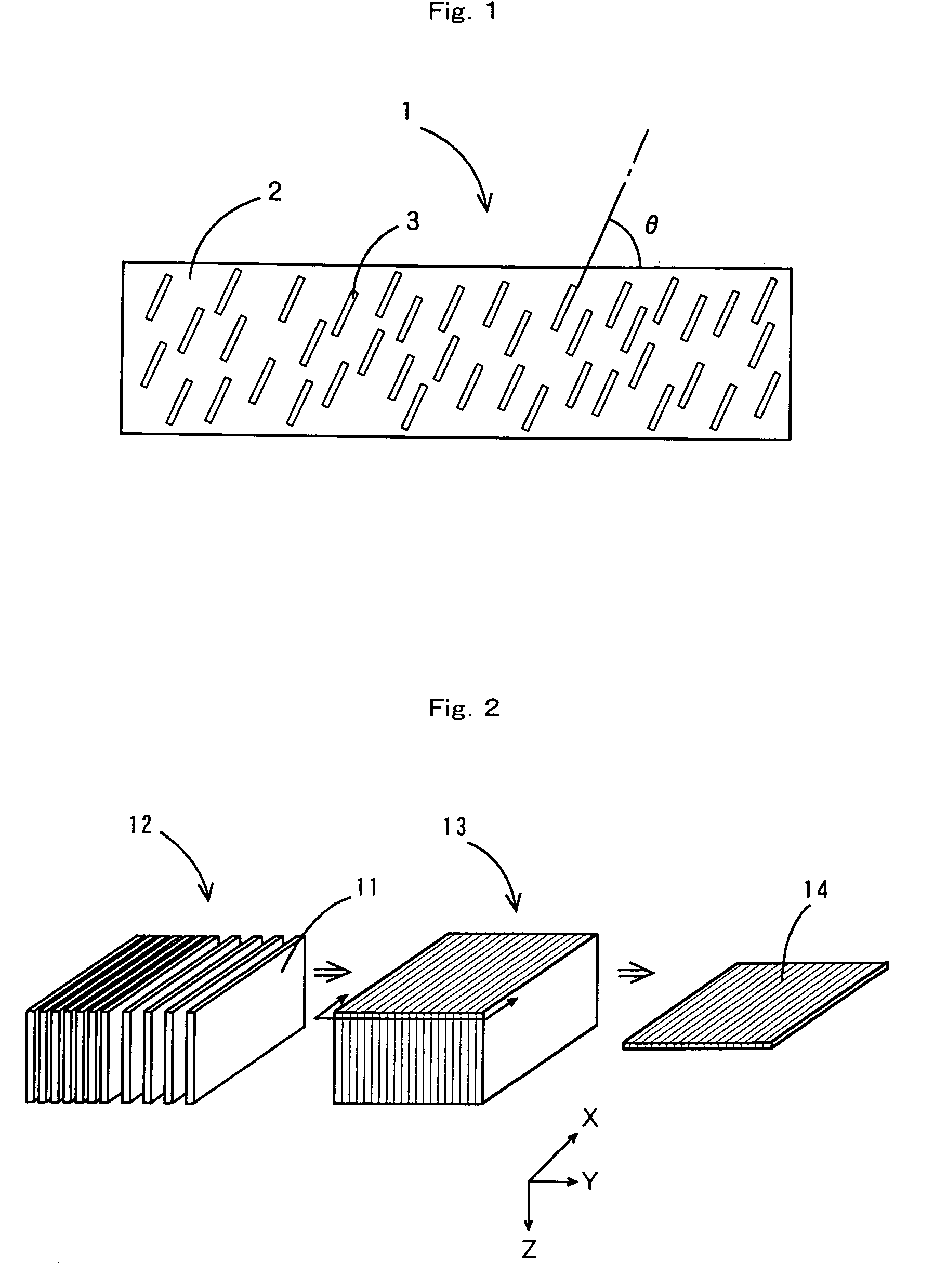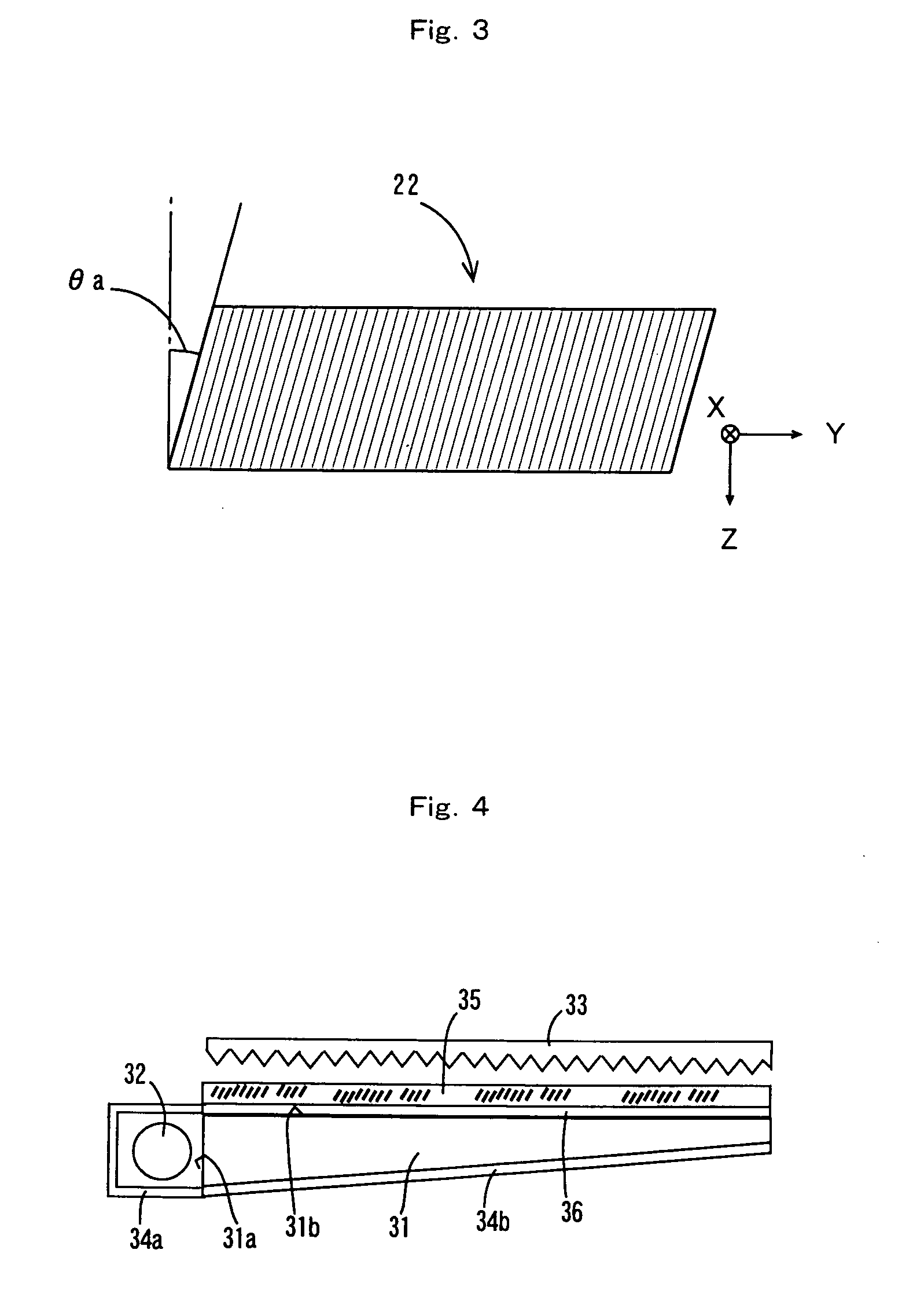Light control sheet and method of manufacturing the sheet
- Summary
- Abstract
- Description
- Claims
- Application Information
AI Technical Summary
Benefits of technology
Problems solved by technology
Method used
Image
Examples
example 1
[0119]
[0120] With 100 parts by weight of a cellulose acetate flake (manufactured by Daicel Chemical Industries, Ltd., acetylation degree of 53%), 50 parts by weight of diethyl phthalate and 1 part by weight of a stabilizer were blended to give an original flake of a transparent resin sheet, wherein the stabilizer was a mixture containing “PHOSPHITE PEP36” (manufactured by Asahi Denka Co., Ltd.), an epoxidized soybean oil “DAIMAC S-300K” (manufactured by Daicel Chemical Industries, Ltd.) and an antioxidant “ANTI-OX L” (manufactured by NOF Corporation) at a proportion of 4:4:2 (weight ratio). To this original flake was added 3 parts by weight of a transparent mica fine particle (“PDM10B” manufactured by Topy Industries, Ltd., mean diameter at surface direction: 12 μm, thickness: 0.2 μm), and the mixture was heated at 235° C., kneaded, and solidified in a cold water to cut into a pellet. The pellet was dried at 90° C. for 2 hours, then heated at 180° C., kneaded, and extruded into a sh...
example 2
[0127] The primary sheet prepared in Example 1 was cut off by a length of 30 cm along the X-axial direction to make strip-like primary sheets. As shown in FIG. 3, 400 pieces of the strip-like primary sheets were laminated (or layered) so that the top of the primary sheets was tilted in a lateral direction at an angle θa of 10° to the perpendicular line. The multilayer mass was heated to 180° C. with pressing the both sides thereof to weld the primary sheets of the multilayer mass each other, and a block of which the both sides were inclined by an angle of 10° was produced. This block was sliced to a thickness of 0.6 mm along the X-axial direction (X-Y plane) so that the Z-axial direction was defined as the thickness direction to obtain a light control sheet.
[0128]FIG. 8 shows a cross sectional view along the Y-Z plane of this light control sheet (photomicrograph). As shown in this figure, the mica fine particle in the sheet was uniformly oriented so that the angle of the plate surf...
example 3
[0129] A light control sheet 0.8 mm thick was obtained in the same manner as in Example 2 except that the angle of inclination θa of the block lateral side was taken as 15°. The observation of the section along the Y-Z plane in this light control sheet revealed that the mica fine particle in the sheet was uniformly oriented so that the angle of the normal line of the plate surface to the normal line of the sheet surface was 75°.
PUM
 Login to View More
Login to View More Abstract
Description
Claims
Application Information
 Login to View More
Login to View More - R&D
- Intellectual Property
- Life Sciences
- Materials
- Tech Scout
- Unparalleled Data Quality
- Higher Quality Content
- 60% Fewer Hallucinations
Browse by: Latest US Patents, China's latest patents, Technical Efficacy Thesaurus, Application Domain, Technology Topic, Popular Technical Reports.
© 2025 PatSnap. All rights reserved.Legal|Privacy policy|Modern Slavery Act Transparency Statement|Sitemap|About US| Contact US: help@patsnap.com



